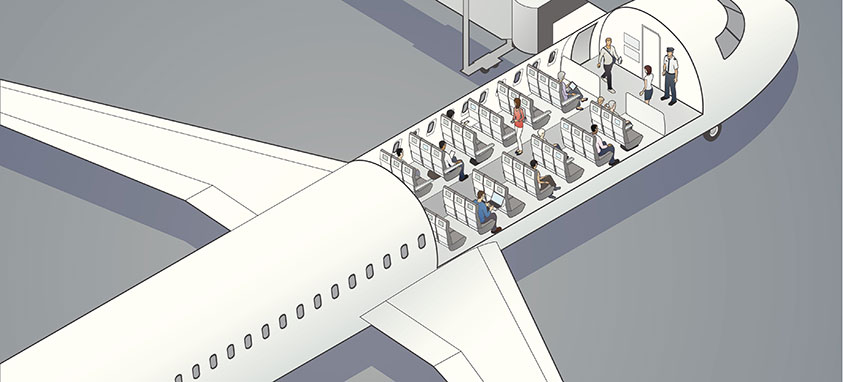A number of things pass through your mind during a flight, especially if you’re traveling for work—such as when to eat, what to wear and how you can fit everything into two days. Surely, your mind also drifts to the random, and that’s when these plane questions arise. We’ll answer the questions you’ve probably mused a million times but never resolved. Plus, you never know when this arbitrary knowledge could come in handy!
1. Do you actually need to switch on airplane mode? It’s tricky, but most likely, no. There has never been an incident where this interference caused a crash. However, it has been said to interfere with the radio frequencies, potentially harming communication between the pilot and air traffic control. Many speculate that this was regulated by the Federal Aviation Administration (FAA), since there are too many variables regarding mobile frequencies. So, they cannot be 100 percent either way.
2. Is the plane safe from lightning? Yes, absolutely. Planes are built with a protective metal that’s engineered to prevent electric build up while protecting from power surges.
3. Why do airplane wings have a green and red light? The lights are to signal planes crossing in their path. The red light is always on the left side, while the green light is always on the right. This way, the crew is able to determine the direction the plane is traveling.
4. Why do planes have ash trays? Even though smoking has been prohibited for a long time, the FAA actually made ash trays a requirement. Apparently, some passengers still ignore the various announcements (and common sense). When this happens, the air crew needs a completely safe place to put the suckers out.
5. Can the emergency doors be opened in flight? No, actually. Planes are designed so that the door remains shut throughout the flight rather than depending on lock systems. In the air, too much pressure pushes on the door for it to actually open in-flight—phew!
6. Why does airplane food have such a bad reputation? This can actually be explained with some science. In the air, up to one-third of your taste buds are numbed due to cabin pressure. So no more blaming the airline or picky eaters!
7. Can the window break? If it does, will it suck everyone out? No, and no. There are two glasses. The structural one is protected by the Plexiglas that passengers can touch. This glass is extremely strong.
8. What happens to the lavatory toilet contents? Contrary to what you might think, it’s not dropped over the ocean! Instead, the contents are stored in a holding tank that sits in the plane. On the ground, the tank is transported for proper disposal.
9. Why are airplane windows round? Airplanes don’t have square-shaped windows because they are weaker in the corners and therefore stress concentrates there. Frequent pressurization and depressurization of these windows, would eventually cause corners to deform, crack and even break, whereas rounded windows have an even amount of stress throughout the window. If you’re also wondering about those small holes, one in each of the three panes is placed to help relieve and even-out the pressure.
10. Why are the lights dim during landing? This is actually a safety precaution. Dimming the lights gives passengers and crew the opportunity to adjust their eyes, just in case anything should go wrong and an evacuation is needed.




